By Luca Giovanni Bottoni - Technical Manager of the Power Plate Exclusive center
There is a real support system for the functional balance in the human body, which is represented by that central band that includes the coxo-lumbo-pelvic complex and which allows stability that promotes reactivity. We are talking about the CORE, the muscular corset that promotes better posture and dynamic actions, an element that in recent years has assumed a marked importance both in fitness and in competitive training.
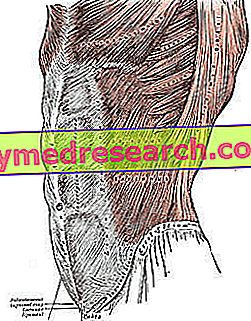
We therefore speak of CORE STABILITY when the exercise is aimed at reinforcing this area, an exercise that is independent of the age, weight and level of physical fitness of the subject, since the CORE must in any case be solicited and conditioned in any case. To achieve this goal it is therefore necessary to strengthen and stabilize the muscles of the abdominal corset, namely: abdominal rectum - abdominal obliques - transversus - paraspinal muscles - square of the loins - pelvic floor. The improvement of the tone of these muscles, in addition to ensuring a functional balance, actively protects the lumbar spine, the one that is most often suffering. To properly train the CORE, one must start from the assumption that the need is to raise awareness, rather than reinforce, muscles that are often weak, such as the transversus and the obliques, since the force of gravity and an incorrect posture tend to make them hypotonic. It is therefore necessary not so much to possess strong muscles as to develop their reactivity and to keep them proprioceptively stimulated. The location of the CORE is a little more complicated than one would think. It cannot be individualized only in the area of the abdominal belt but extends superiorly and inferiorly to enclose a wider area than the corset. Let's say then that the CORE is not anatomically defined and that it is divided into two parts: muscle groups of the hip, anterior posterior of the trunk and pelvic floor - the thoracolumbar fascia "that is the fascia that wraps around the chest and the lumbar part". To these two parts a component must be added: the intra-abdominal pressure, fundamental for the functional stability of the CORE. In conclusion, the CORE can be defined as the link aimed at stabilization but also as a link element, ie transfer of forces from the lower part to the upper part of the body. CORE training must therefore contain a combination of strength, flexibility and control. Training must therefore be of a functional nature.
(Gracovetsky's 1981 study)
Functional exercises on Power-Plate® for the CORE
Power-Plate® devices are high quality vibrating devices that give life to a new dimension of solutions for physical fitness. Using the principles of Acceleration Training TM to stimulate the body's natural response to vibrations, it transmits energy waves throughout the body, activating muscle contractions between 25 and 50 times per second. Acceleration TrainingTM naturally causes the human body to react with involuntary muscle actions. The result is an improvement in the production of strength and physical vigor in general. (Www.powerplate.it)
From the union between the postures for the CORE and the mechanical vibration on Power-Plate®, a training system is created for postural reinforcement, with the intent to increase the strength composition. The Power-Plate® CORE TRAINING which is currently composed of 4 functional exercises. These exercises activate the CORE in both dynamic and static situations. Note that they are not abdominal exercises, but exercises in which the abdominal muscles are activated to stabilize the rest of the body. (Luca G. Bottoni)
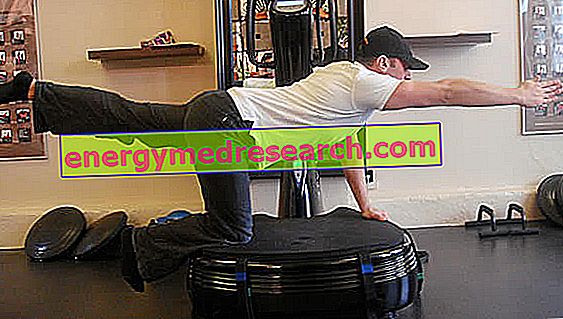
Ex 1 Birddog Extension Quadrupedal position, with the support of the hands slightly outside the shoulders. The opposite arms and legs are extended, causing the movement to proceed by a contraction of the abdomen, which will be maintained throughout the exercise.
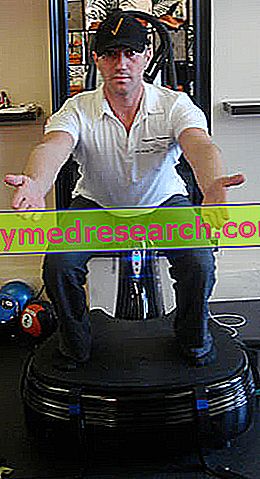 | 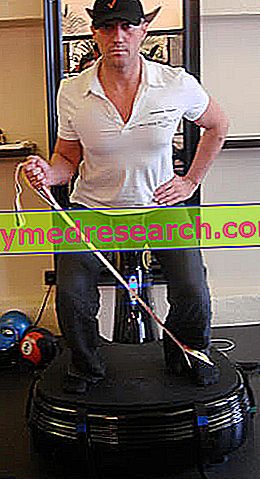 | |
Ex2 Squat in Bracing pos. For Bracing, we intend to "support" the abdominal wall with a tension that should not bring the ribs closer to the iliac spine. Therefore there must be tension without any bending of the trunk. Once this position has been identified, a series of 90 ° squats of at least 10 repetitions will be performed, in a slow and controlled way. | Ex3 Rot. of the bust with elastic bands From the squat position, attach a rubber band under the foot. A torsion of the bust is carried out starting from the pelvis. Therefore it is not the shoulders that rotate but it is the CORE that performs the movement. The same exercise can also be performed in a lunge position. |
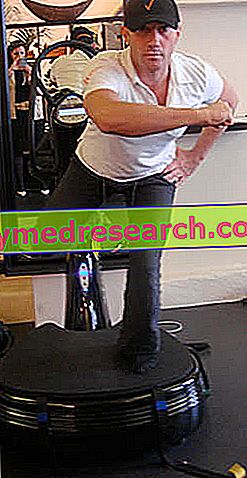 | Ex4 Single leg torsion with weight Balancing on one leg, the weight is directed over the support foot and then up over the opposite shoulder. |



